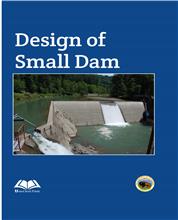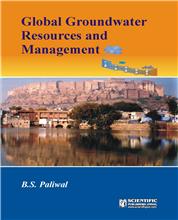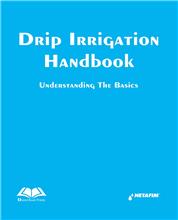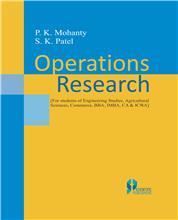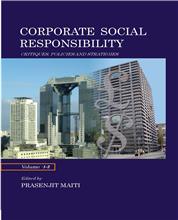1 DIMENSIONAL ANALYSIS AND SIMLITUDE
1.1 Introduction
1.2 Dimensions, Dimensional Homogeneity and Units
1.3 Dimensional Analysis
1.3.1 The Buckingham - theorem
1.3.2 Selection of repeating variables
1.3.3 Determining the groups
1.3.4 Some additional comments about dimensional analysis
1.3.5 Uniqueness of terms
1.3.6 Limitations of dimensional analysis selection of variables superfluous and omitted variables
1.4 Modeling and Similitude
1.4.1 Geometric Similarity
1.4.2 Kinematic similarity
1.4.3 Dynamic similarity
1.4.4 Standard dimensionless numbers
1.4.4.1 Reynold's number (Re)
1.4.4.2 Froude's number ( )
1.4.4.3 Mach's number (M)
1.4.4.4 Euler's number (Eu)
1.4.4.5 Weber's number (Wb)
1.5 Model Laws
1.5.1 Reynold's model law
1.5.2 Froude's model law
1.5.3 Mach model law
1.5.4 Euler's model law
1.5.5 Weber's model low
1.6 Undistorted and Distorted Models
1.7 Scale Effect
1.8 Comments on Model Testing
Illustrative Examples
Exercises
A. Theory
B. Unsolved Problems
2 LAMINAR VISCOUS FLOW
2.1 Introduction
2.2. Hagen-Poiseuille Flow
2.3. Plane Poiseuille Flow
2.4 Coutte Flow
Illustrative Examples
Exercises
A. Theory
B. Unsolved Problems
3 TURBULENT FLOW THROUGH PIPES
3.1 Introduction
3.2 Turbulent Shear Stress
3.3 Boussines Eddy Viscosity
3.4. Prandtl's Mixing Length Theory
3.5 Shear Velocity or Friction Velocity
3.6 Prandtl's Universal Velocity Distribution Equation for Turbulent Pipe Flow
3.7 Hydrodynamically Smooth and Rough Boundaries
3.8 Velocity Distribution for Turbulent Flow in Smooth and Rough Pipes Prandtl Karman Velocity Distribution Equation
3.8.1 Velocity distribution in smooth pipes
3.8.2 Velocity distribution in rough pipes
3.9 Velocity Distribution for Turbulent Flow in Terms of Average Velocity
3.9.1 Turbulent flow in smooth pipes
3.9.2 Turbulent flow in rough pipes
3.9.3 Difference between point velocity and average velocity for smooth and rough pipes
3.10 Turbulent Pipe Coefficient
3.11 The Chronological Development of Turbulent Pipe Flow Theories
3.11.1 Smooth pipes and Blasius equation
3.11.2 Stanton and Pannell
3.11.3 Nikuradse experimental results using artificially rough pipes
3.11.4 The smooth and rough laws of Prandtl and von Karman
3.10.5 The Colebrook White transition formula
3.11.6 Moody diagram for commercial pipes
3.11.7 Hydraulic Research station charts (HRS) Ackeres
3.11.8 Barr explicit formula
3.11.9 Murdock formula
3.11.10 Swamee and Jain's explicit equation
3.11.11 S.E. Haaland's formula
3.12 Non Circular Pipes
3.13 Roughness of Pipes with Age (Old Pipes)
Illustrative Examples
EXERCISES
A. Theory
B. Unsolved Problems
4 OPEN CHANNEL FLOW
4.1 Introduction
4.2 Flow Classification
4.2.1 Steady uniform flow
4.2.2 Steady non uniform flow
4.2.3 Unsteady flow
4.2.4 Laminar and turbulent flows
4.2.5 Subcritical, critical and supercriticial flows
4.3 Geometric Elements of Channel Section
4.4 Velocity Distribution in A Channel Section
4.5 Uniform Channel Flow
4.5.1 The Chezy's formula
4.5.2 The Ganguillet and Kutter formula
4.5.3 The Manning's formula
4.6 Most Economical Section of Channel
4.6.1 Rectangular channel section
4.6.2 Trapezoidal channel section
4.6.3 Triangular channel section
4.6.4 Circular channel section
4.7 Open Channel Section for Constant Velocity at all Depths of Flow
4.8 Specific Energy and Critical Depth
4.8.1 Total energy and specific energy
4.8.2 Relationship between specific energy and depth
4.8.3 Critical depth (yc)
4.8.4 The general equation of critical flow
4.8.5 An application of the critical depth line
4.8.6 Channel Transitions
4.8.7 Critical depth meters
4.9 Determination of Average (Mean) Velocity in Flow through Channels
4.10 Gradually Varied Flow
4.10.1 General equation of gradually varied flow or Dynamic equation gradually varied flow
4.10.2 Special values of varied flow equation
4.10.3 Classification of surface profiles
Illustrative Examples
EXERCISES
A. Theory
5 RAPIDLY VARIED FLOW
5.1. Introduction
5.1.1 Hydraulic jump
5.1.2 Forms of the hydraulic jump
5.1.3 Uses of the hydraulic jump
5.1.4 Analysis of the hydraulic jump
5.1.5 Energy loss across a hydraulic jump
5.1.6 Significance of the hydraulic jump equations
5.1.7 Height and length of the hydraulic jump
5.1.8 Location of hydraulic jump
Illustrative Examples
Exercises
A. Theory
B. Unsolved Problems
6 WAVES AND SURGES IN OPEN CHANNEL
6.1 Introduction
6.2. Waves and their Classification
6.2.1 Celerity of small solitary wave
6.2.2 Monoclinal waves
6.2.3 Surges
6.2.4 The upstream positive surge
6.2.5 The downstream positive surge
6.2.6 Negative surge waves
Illustrative Examples
EXERCISES
A. Theory
B. Unsolved Problems
7 IMPACT OF FREE JETS
7.1. Introduction
7.2. Force Exerted by Fluid Jet on Stationary Flat Plate
7.2.1. Flat plate normal to the jet
7.2.2. Flat plate inclined at an angle θ to the jet
7.3. Force Exerted by Fluid Jet on Moving Flat Plate
7.3.1. Flat plate normal to jet
7.3.2. Flat plate inclined to jet
7.3.3. Flat plate moving in series
7.4. Force exerted by a Fluid Jet on Stationary Curved Vane
7.4.1. Jet striking a symmetrical stationary curved vane at the centre
7.4.2. Jet striking an unsymmetrical stationary curved vane tangentially at one of the tips
7.5. Force Exerted by a Fluid Jet on Moving Curved Vane
7.5.1. Curved vane, jet striking at the centre
7.5.2. Jet striking on unsymmetrical curved vane tangentially at one of the tips
7.6. Flow Over Radial Vanes
7.7. Euler’s Equation of Fluid Machines (Moment of Momentum or angular momentum equation)
7.7.1. The physical concept of Eulers equation
Illustrative Examples
Exercises
A. Theory
B. Unsolved Problems
8 HYDRAULIC PRIME MOVERS
8.1. Introduction
8.2. Heads
8.2.1. Gross Head
8.2.2. Net Head
8.3. Component of Hydropower Plants
8.3.1. Water Reservoir
8.3.2. Head Works
8.3.3. Dams
8.3.4. Water Ways
8.3.5. Tail Race and Outlet Water Way
8.3.6. Turbine Governors
8.3.7. Generators
8.3.8. Transformer and transmission lines
8.4. Hydraulic Turbines and their Selection
8.4.1. Impulse and Reaction turbines
8.4.2. Classification according to direction of flow
8.4.3. Classification according to specific speed and speed factor
8.4.4. Operating or normal speed N
8.4.5. Turbine rating and performance
8.4.6. Runaway speed
8.4.7. Cavitation in turbines, and turbine setting
8.4.8. Selecting the turbine type and number of units
8.5. Types of Energy Loss and Efficiencies
8.5.1. Efficiencies
Exercises
A. Theory
9 IMPULSE TURBINES
9.1. Introduction
9.2. The Pelton Wheel
9.2.1. Main Components and their functions
9.3. Pelton Wheel Losses and Efficiencies
9.4. Theory of Pelton Wheel
9.5. Working Proportions of Pelton Wheel
9.6. Number of Jets and Wheels Per Unit
9.7. Selection of Jet Ratio and Bucket width to Jet Diameter
9.8. Selection of Speed
9.9. Selection of High Head
9.10. Relation between Specific Speed and Jet Ratio
9.11. Limitations of the Pelton Turbine
Illustrative Examples
Exercises
A. Theory
B. Unsolved Problems
10 REACTION TURBINES
10.1. Introduction
10.2. The Francis Turbine
10.2.1. Scroll casing or spiral casing
10.2.2. Speed rings
10.2.3. Guide vanes or wicket gates
10.2.4. Runner
10.2.5 Draft tubes
10.3. Work done and Efficiencies of Francis Turbine
10.4. Velocity Diagrams for Francis Turbine
10.5. Working Proportions of A Francis Turbine
10.6. Design of Francis Turbine Runner
10.7. Axial Flow Reaction Turbines
10.9. Choice between Propeller and Francis Turbines
10.10. Choice of Kaplan and Propeller Turbines
10.11. Kaplan and Propeller Turbines
10.11.1. Scroll casing
10.11.2. Stayring
10.11.3. Wicket gates
10.11.4. Runner
10.11.5. The turbine cover
10.11.6. The air valve
10.11.7. Draft tube
10.11.8. Cavitation
10.12. Working Proportions of Kaplan and Propeller Turbines
10.13. Draft Tubes
10.13.1. The function of draft tubes
10.13.2. Hydraulic characteristics of draft tubes
10.13.4. The efficiency of a draft tube
10.14. Types of Draft Tubes
10.15. Cavitation
10.15.1. Definition of Cavitation
10.15.2 Causes of cavitation
10.15.3. Effects on hydraulic machines
10.15.4. Cavitation Erosions
10.15.5. Prevention of Cavitation
Illustrative Examples
Exercises
A. Theory
B. Unsolved Problems
11 GOVERNING OF HYDRAULIC TURBINES
11.1. Introduction
11.2. The Main Elements of Governor
11.3. Action of A Governor
11.4. Governing of Impulse Turbine
11.4.1. Combined spear and deflector control
11.5. Governing of Francis Turbines
11.5.1. Relief valve or pressure regulator
11.6. Governing of Kaplan Turbine
11.8. Surge Tanks
11.8.1. The main functions
11.8.2. Working
11.8.3. Types of surge tank
11.8.4. Multiple surge tanks
11.8.5. Necessity of a tank
11.8.6. Location
11.8.7. Size of tank
Illustrative Examples
Exercises
A. Theory
B. Unsolved Problems
12 PERFORMANCE OF HYDRAULIC TURBINES
12.1. Introduction
12.2. Performance Under Unit Head
12.2 Performance under Specific Conditions
12.2.1 Specific speed
12.3 Performance Characteristic Curves
12.3.1 Main characteristic curves
12.3.2 Operating characteristics curves
12.3.3. Isoefficiency or Muschel curves
12.4 Model Testing of Turbines
Illustrative Examples
Exercises
A. Theory
B. Unsolved Problems
13 CENTRIFUGAL PUMPS
13.1 Introduction
13.2 Classification of Centrifugal Pumps
13.2.1 Operating head
13.2.2 Specific speed
13.2.3 Types of casing
13.2.4 Number of impellers per shaft
13.2.5 Disposition or layout of shaft
13.2.6 Number of entrances to the impeller
13.2.7 Relative direction of flow through impeller
13.3 Centrifugal Pump
13.3.1 Types of vanes
13.3.2 Work done and action of centrifugal pump
13.3.3 Head of a Pump
13.3.4 Efficiencies of centrifugal pump
13.3.5. Losses in centrifugal pump
13.4 Minimum Starting Speed
13.5 Minimum Diameter of Impeller
13.6 Specific Speed
13.7 Affinity Laws for Centrifugal Pumps
13.8 Cavitation in Centrifugal Pumps
13.9 Model Testing of Centrifugal Pump
13.10 Multistage Centrifugal Pumps
13.10.1 Pumps in series
13.10.2. Pumps in Parallel
13.11 Characteristic curves of Centrifugal Pumps
13.11.1 Main and operating characteristics
13.11.2 Constant efficiency or Muschel curves
13.11.3 Constant head and Constant discharge curves
13.12 Pump Selection
Illustrative Examples
Exercises
A. Theory
B. Unsolved problems


